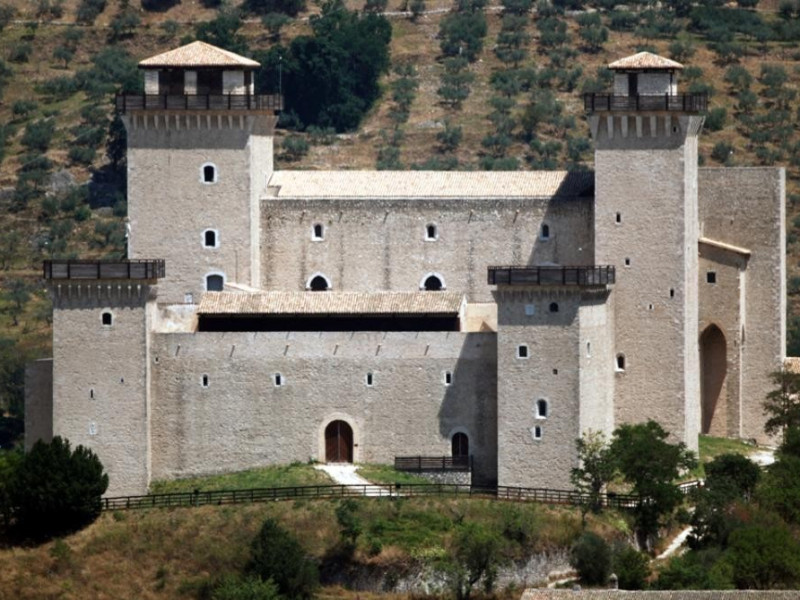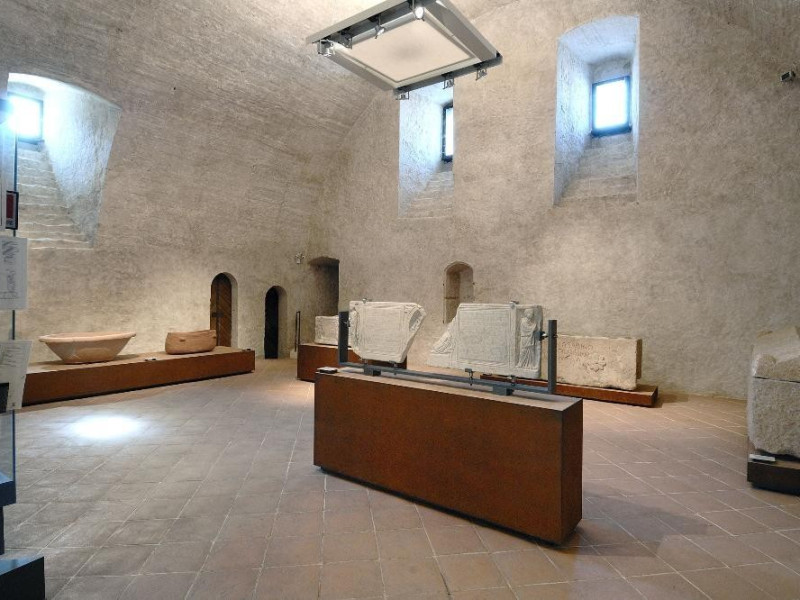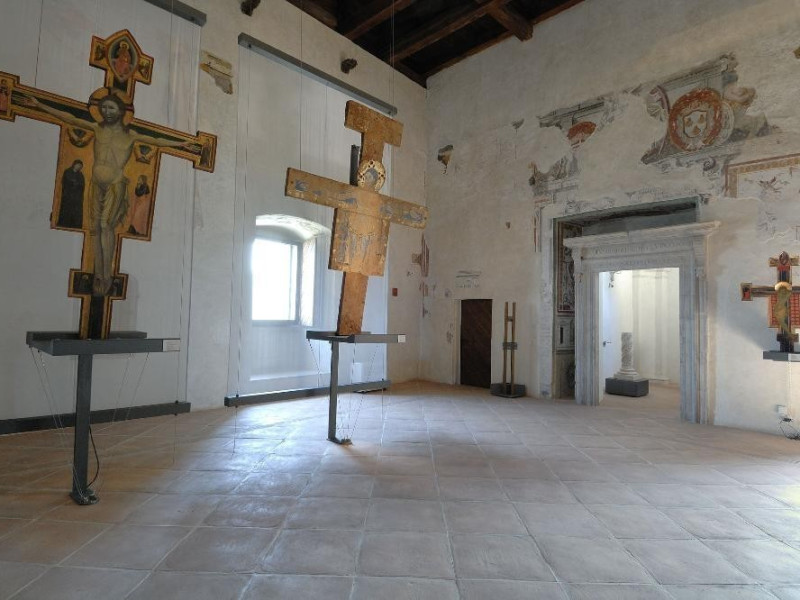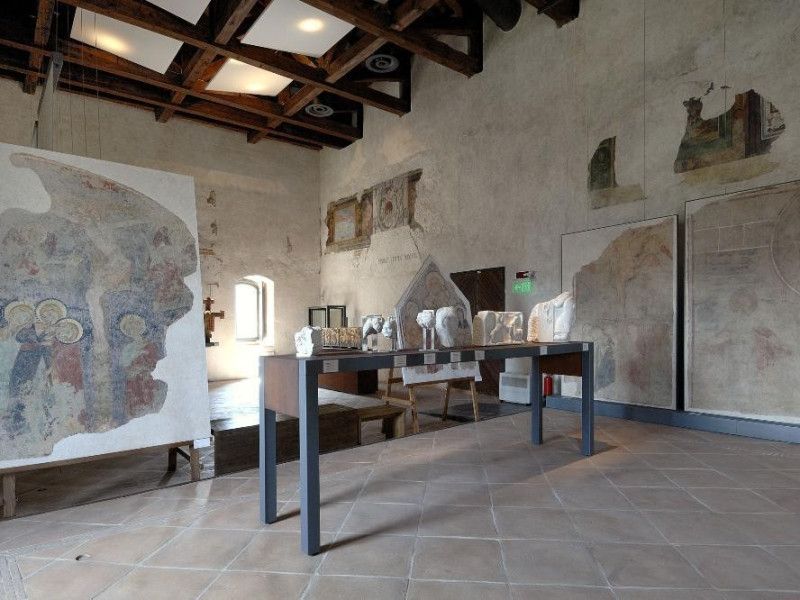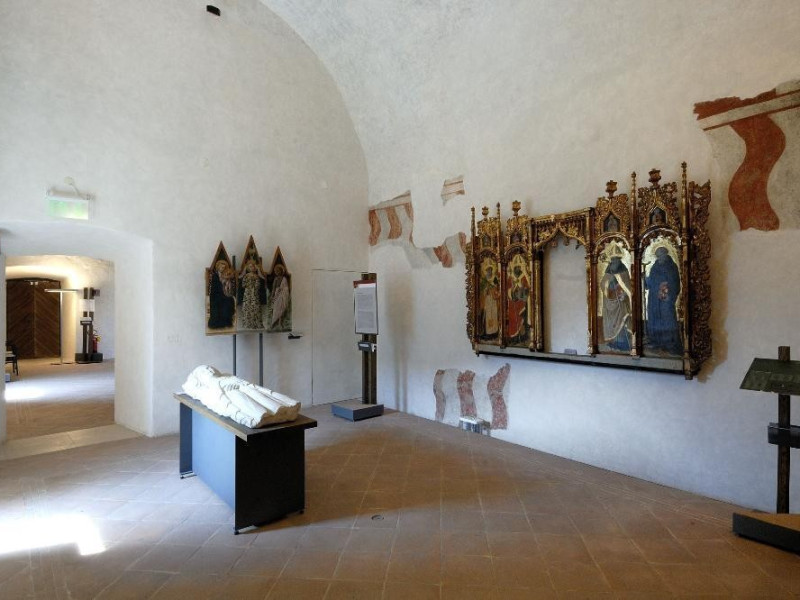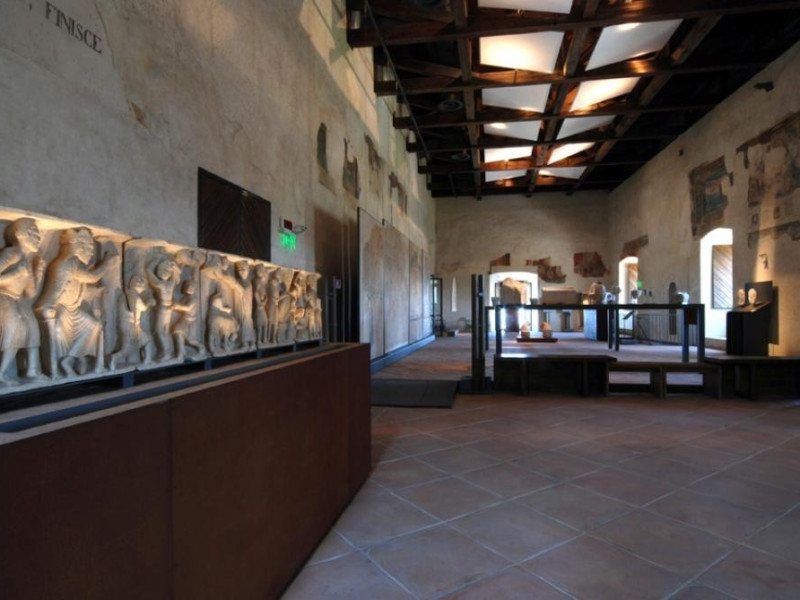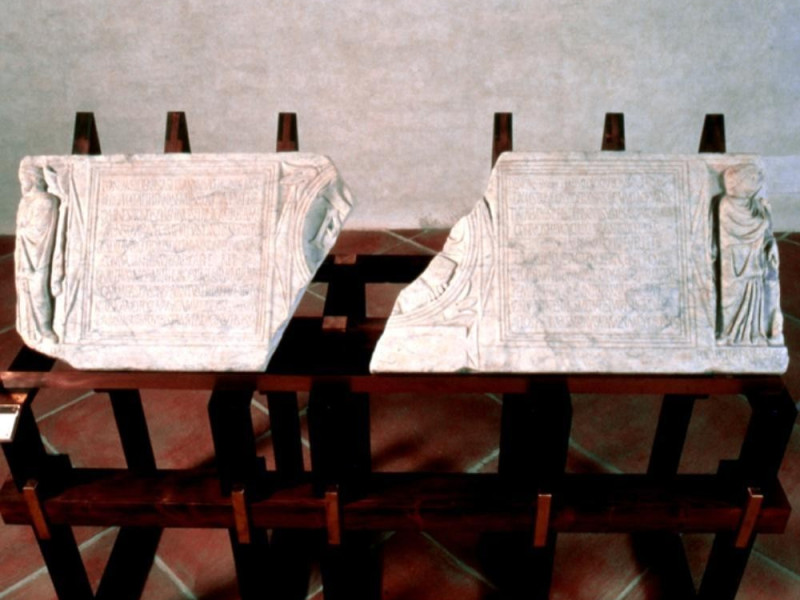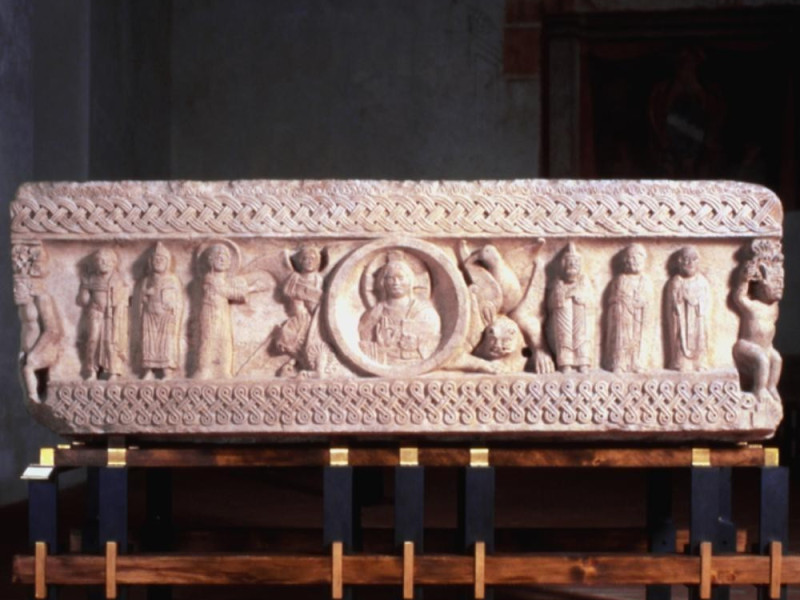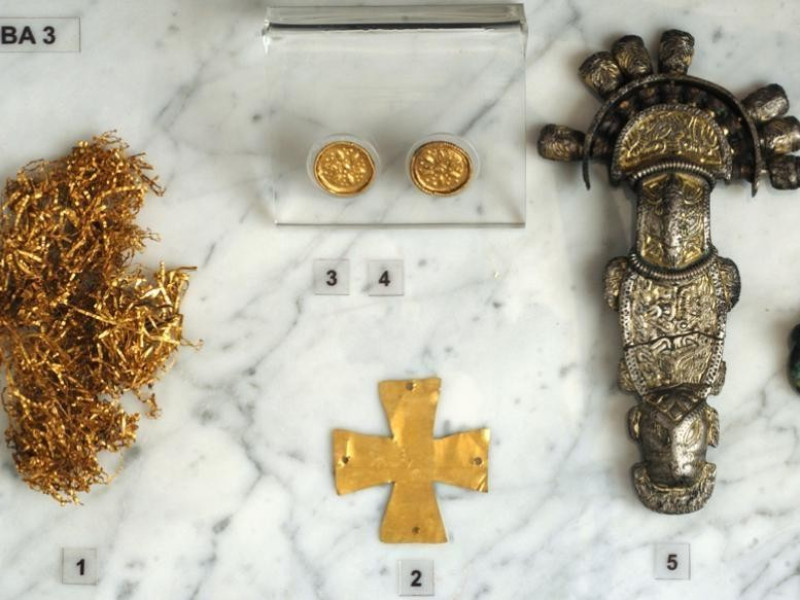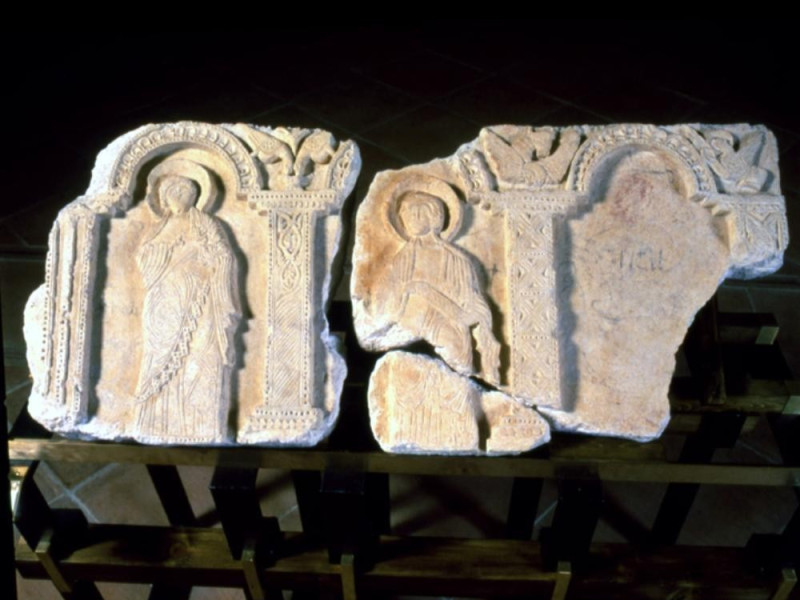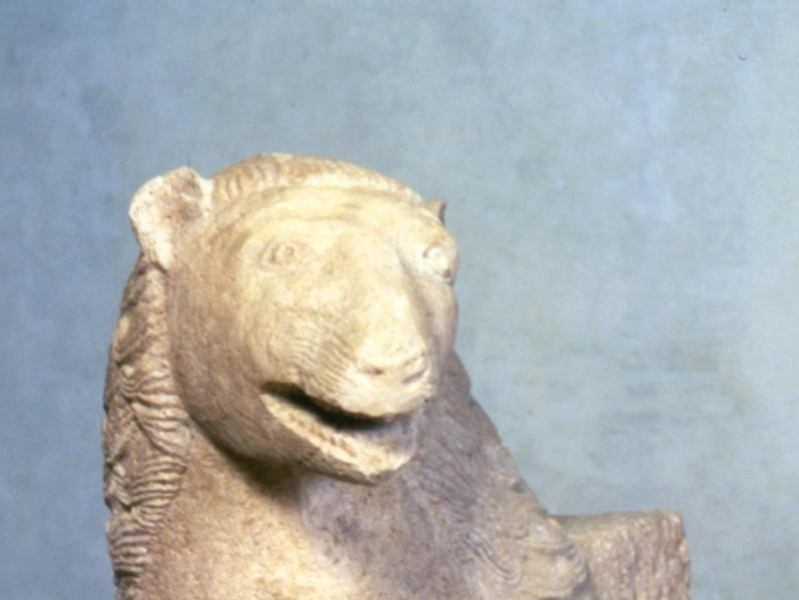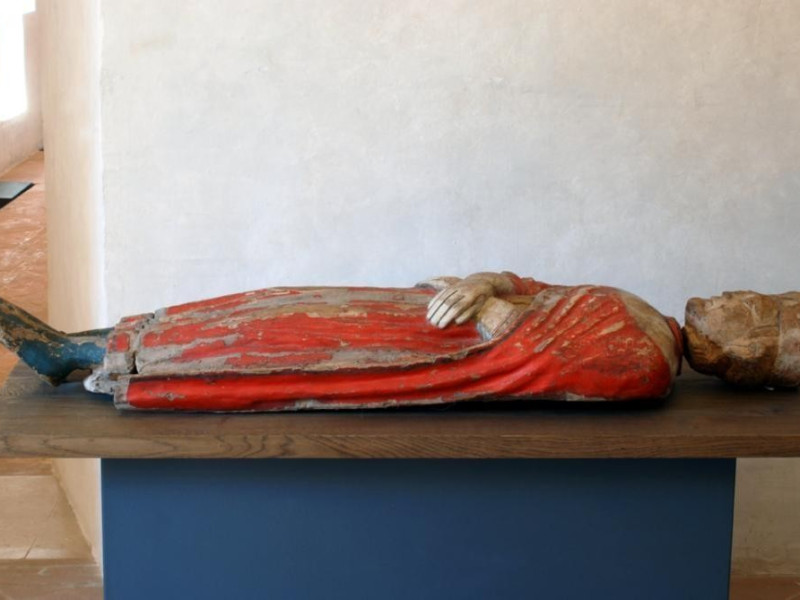Luogo - Museum
Museo Nazionale del Ducato di Spoleto
Where
Piazza Campello, 1, Spoleto (Perugia)
National Museum of the Duchy of Spoleto
The Museo Nazionale del Ducato di Spoleto is located inside the Rocca, in the highest part of the historical center of Spoleto. The Museum was instituted to document the history of the Duchy, born thanks to the Longobards, a Germanic population who broke the political unity of the Italian peninsula in the 6th century A.D.
The Rocca was built by order of the Spanish Cardinal Gil Alvarez Carrillo de Albornoz starting in 1360, and was the center of the Episcopal and Papal See. Today, with the progressive recovery of the rooms and frescoes that still decorate the walls, the complex has finally recovered its early charm, after having been used as a detention centre for a long time.
The Museum proposes an interesting documentation of the knowledge of the Spoleto territory from the 4th to the 15th century, and at the same time illustrates, through various panels, the beauty of the frescoed rooms in which the works of art are displayed.
Inaugurated in 2007, the Museum was instituted thanks to the project of collecting the materials and works of art, in large part already held in the Civic Museum and the Art Gallery, which are useful in documenting the origins, development and the multiple historical and cultural relapses of the Longobard Duchy of Spoleto.
It is structured in two spaces around the Cortile d’Onore—the Ward of Honor—one on the Ground Floor and the other on the First Floor, and is subdivided into 15 rooms.
Overall the work collection covers an arch of time that spans from the 4th century A.D., with evidence of the early Christian communities, to the 15th century. Conceived as an appropriate tool for acquiring knowledge of the town and its territory, the museum intends to convey the complexity of the historical events in which it was involved, to the visitors, while at the same time showing its cultural vivacity, even after the fall of the Duchy.
The exhibition itinerary starts from the 4th century, by illustrating the early Christian communities through material coming from funerary sites and neighboring public buildings of cult, highlighting the phenomenon of monasticism. This is followed by the works from the 6th to the 9th century, which witnessed the artistic evolution of the territory, and finally ends with the sculptures and paintings from the 12th to the 15th century that document the extraordinary artistic flourishing of the town and its territory very well, such as the Santa Maria delle Grazie Triptych of Niccolò di Liberatore. Along the pathway, illustrative panels—giving account of the historical function of each room the visitors go through—complete the itinerary.
